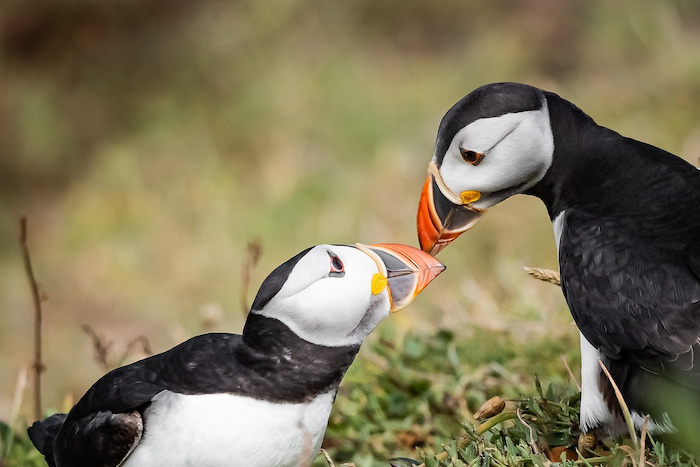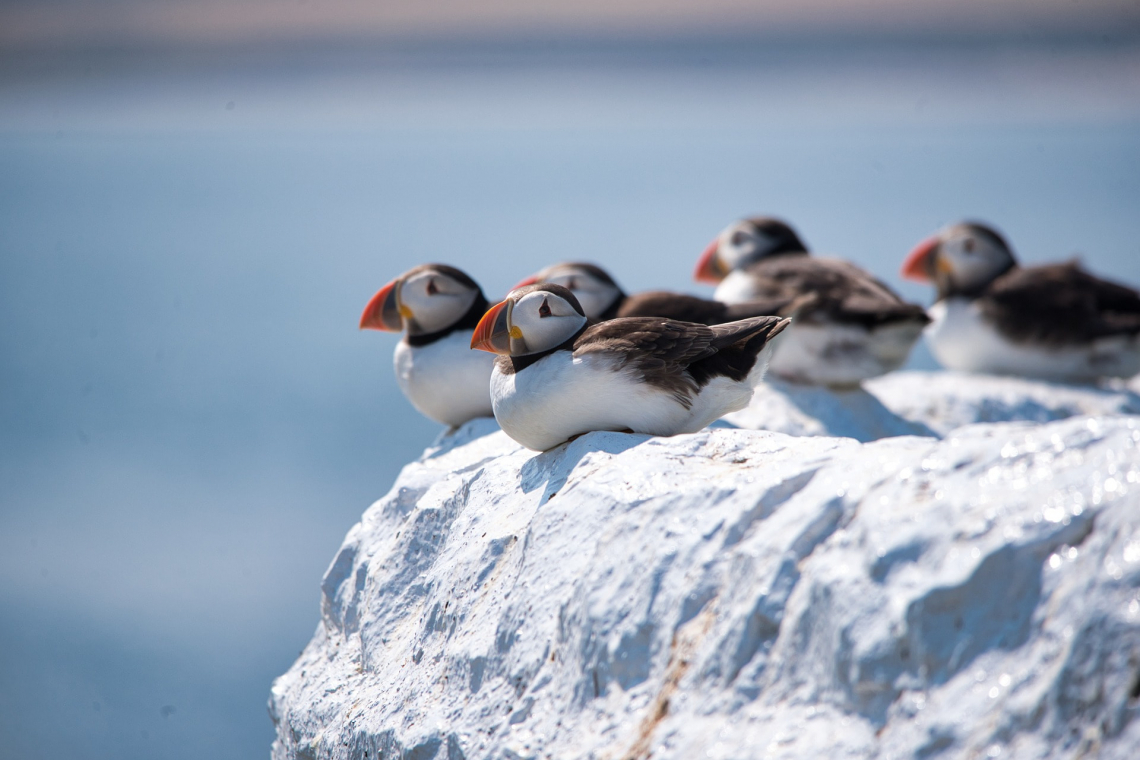The Atlantic puffin consistently ranks high in the list of Britain's favourite birds and has been lovingly dubbed ‘The clown of the sea’.
Atlantic puffin facts: habitat & where to find them

A monogamous breeding pair reuniting
Long awaited reunions: April and May
In late March to early April, hundreds of thousands of Puffins return to their breeding grounds. These long-lived birds are monogamous, and although very little is known about how they stay in contact with their forever partner outside of the breeding season, they rejoice for this special occasion every year. Together, the breeding pair prepares everything for the safe arrival of their chick, who is affectionately known as ‘Puffling’ within bird enthusiast circles.
Atlantic Puffin Sounds
The mother lays a single egg in an underground burrow, where both parents incubate it for 36-45 days until it is ready to hatch and be welcomed to the world. Once hatched, the Puffling remains in its 5 feet below-ground nest for around six weeks. From the second it first opens its beak, the Atlantic puffin’s unique sounds can be heard within the nest, alerting its parents. The breeding pair will then share feeding duties for the upcoming months, ensuring the chick's development while trying to satiate its seemingly never-ending hunger.
‘Puffin patrol’: Remote Icelandic community fighting to save puffin chicks
Leaving the nest: June until August
After safely growing in the confines of its nest, the chick will finally get the chance to explore its wider surroundings (under parental supervision of course).
To become more comfortable with its newfound freedom, the chick's parents will slowly introduce it to the water, a place it will soon call its new home.
Once ready to fledge, Pufflings will abandon their nest and parents entirely to take flight in the shroud of night to avoid potential predators such as large gulls and skuas.
The young Puffins can easily become disoriented by bright lights on the mainland and lose course, crash landing in many cities across Iceland and its neighbouring islands. During mid August, nightly Puffling patrol rescue squads are often being formed in large quantities. This is a very popular tradition for many Icelandic families who scour their neighbourhoods, equipped with cardboard boxes to rescue the confused chicks. After collecting them, they then travel to the shore to release the Pufflings once more. That’s when the small birds are launched into the wind where they quickly take off, ready for the start of their independent lives.

Once Pufflings head out to sea without their parents, they become entirely independent.
Away from breeding grounds
The period that follows the breeding season is when this species is at its most elusive. Experts still have a lot of unanswered questions when it comes to the Atlantic puffin's life outside the breeding grounds. We do know, however, that they overwinter out at sea, which is also where they will feed exclusively for the coming months. Adults will shed their colourful bills after the breeding season, revealing a much more mundane-coloured, smaller beak. And what about the pufflings? They won’t return to their place of birth for five to six years, when they reach sexual maturity and are fully grown at 10.2- 11.4 inches. This is when they will be ready to continue the cycle and join the breeding colony to raise a whole new generation of one of the most fascinating seabirds.


